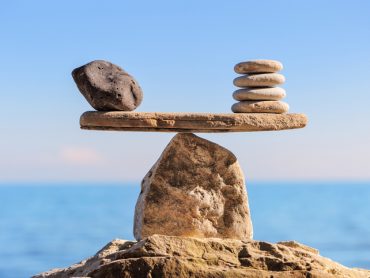Using Sleep Science to Differentiate Your Hotel
I’m not a biologist or MD, nor do I hold any other professional accreditation pertaining to the emerging field of sleep science. But it doesn’t take years of research or a PhD thesis paper to know without an iota of doubt that all your guests value a good night’s sleep. And, as this is a big wellness trend for 2020, now is the time to consider what your hotel can do in this regard to drive revenues.
Healthy sleep is so mission critical to the hotel industry that if you cannot deliver it, then nothing else you do properly will really matter. You can have flawless service delivery and a Michelin-starred restaurant, but if the walls are paper-thin and the rooms are noisy, then that is what guests will remember, affecting their chances of returning or talking positively about you to friends.
Luckily, the findings from the academic community that studies the nature of sleep are now resulting in new technologies that can be deployed at your hotel to help you realize the following benefits:
- Reducing chances of negative reviews by ensuring that guests are in a better mood overall;
- Differentiating your brand and giving it a unique marketing angle versus the competition;
- Building new room categories with sleep science technologies to increase nightly rate.
Importantly, hotels have the capital liquidity to undertake these technological enhancements where single family dwellings or independent home sharing operators do not. This means that new sleep science amenities will help to add a distinctive wow factor beyond what guests can get at home as well as room features cannot be easily copied by alternate lodging providers.
When discussing this with owners as part of my asset management responsibilities through my consultancy, once explained in terms of a profit-making vehicle, the choice is clear. Room renovations are necessary every five to ten years, so you might as well think in terms of what can be added to offer wholly new benefits to customers besides intriguing new décor and furnishings. Moreover, most of the upgrades you make are capital expenses with little impact on operating budgets or even on the total time needed to clean a guestroom.
Once you’ve had a strategic discussion as to whether the above objectives are part of your property’s vision, next comes the tactical implementation for which I like to think in terms of the five senses.
- Sound. As previously mentioned, noisy guestrooms are a surefire way to get one or two stars (tops!) on TripAdvisor. If your walls are thin, instead of gutting them – an insurmountable cost – consider sound dampeners like thick carpets, heavy drapes, ceiling sound insulation, tighter doorway transitions or even absorbent décor items like wall art (without glass which reflects sound)or lots of books. Next is HVAC upgrades for which there are now a number of motion-activated smart devices that can regulate the timing of these systems so any palpable hums are minimized when guests are in the room or asleep.
- Sight. Of the five senses, this is where most of the current glitz is focused. Our bodies are naturally attuned to be awake and alert in the presence of blue light (sunrise) or drowsy and ready for sleep in the warmer red colors (sunset). Yet most bulbs and phone screens give off a versicolor spectrum (white) that edges toward the daytime, ultraviolet end. Besides automatic window dimmers and motorized blackout blinds or drapes, a boon for hotels would be to install smart lighting that adjusts the color and the strength of the light based upon a preset daily rhythm so as to promote wakefulness or better prepare the guest for sleep.
- Taste. While not exactly related to technology per se, this sense is definitely the most fun as you will inevitably have to sample all the new sleep-inducing beverages that are hitting the market before deciding which to put in the minibar or offer at a dining outlet downstairs. You could even upgrade your in-room tea selection to provide a myriad of luxury herbal mixtures known to help you doze off. As for foods, there are still a few interesting options, including blue cheeses which have been anecdotally shown to give people more vivid dreams, although I doubt we will ever see blue cheese offered at a turndown service!. And then there is the full of range of alcoholic digestives which undoubtedly you are already familiar.
- Smell. Like taste, this is definitely more on the lo-fi end. While certain fragrances – for instance, lavender – have been shown to induce deeper sleep, there are several small, aroma-emitting devices that can release specific scents across a local area. Efforts are now being made to make these IoT-enabled so they can be hooked up to an app for timed releases. As a fallback option, if scent tech isn’t for you then you can always investigate the costs of having a bouquet of appropriate flowers as an in-room arrival amenity.
- Touch. Without getting into some of the more esoteric examples like vitamin-infused showerheads, the fabrics of bedsheets along with the mattress itself are instrumental for getting your seven hours, and indeed a lot of technology has gone in to improving both over the years. One counterproductive trend in hotels at present is the push for higher and higher thread count linens which are indubitably soft and look great on paper, but they also prevent a mattress from properly venting out the sides. This can result in overheating under the covers, making the guest toss and turn in their sleep. When you are next up for renewing your linens, ask your supplier about this problem and any recommendations they have.



